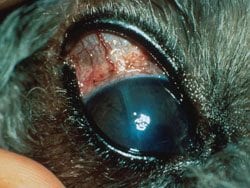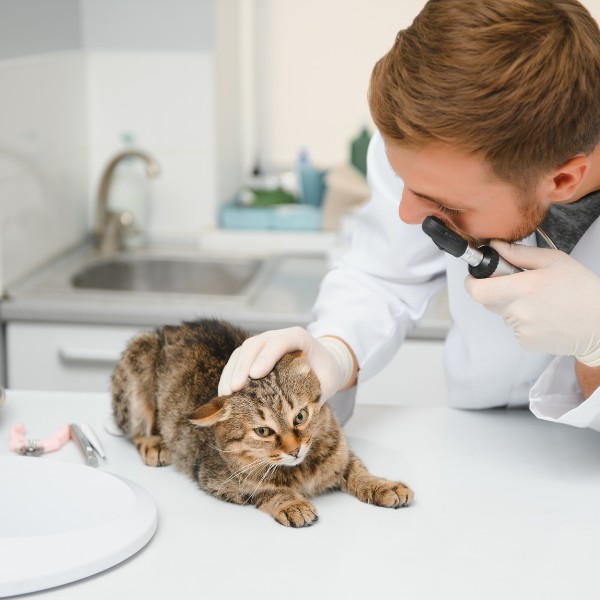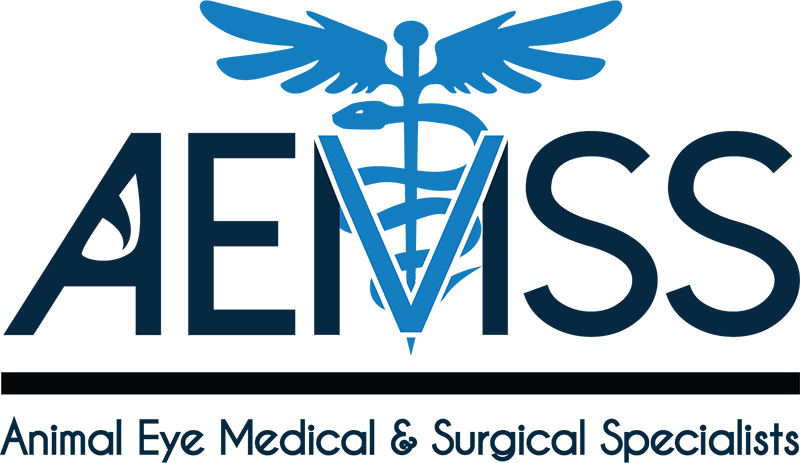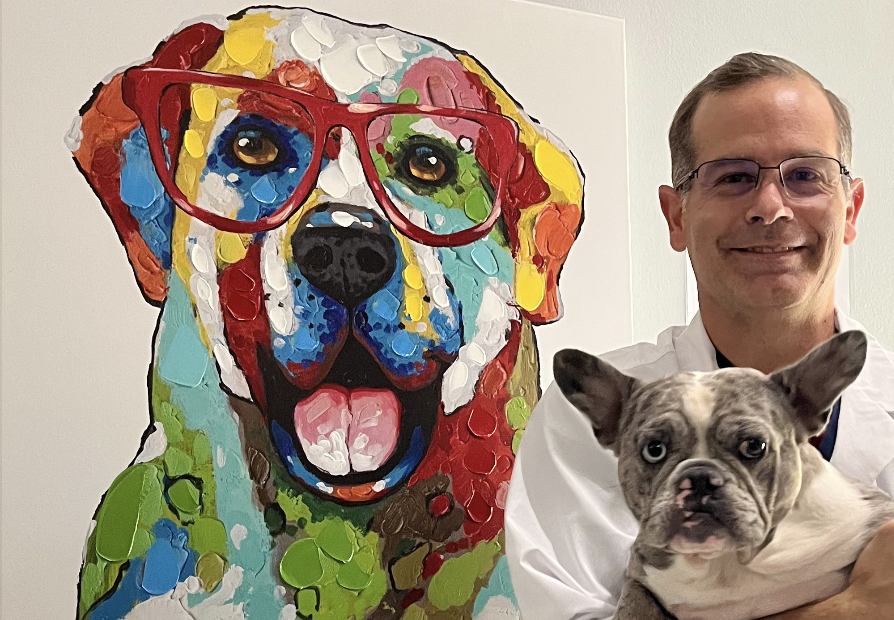Pet Glaucoma in Katy, TX
Glaucoma is a serious eye condition that affects pets by increasing the pressure within the eye, known as intraocular pressure (IOP). This elevated pressure is not only painful but can also lead to irreversible blindness if not treated promptly. Understanding the causes, symptoms, and treatment options for pet glaucoma is crucial in preserving your pet’s vision and quality of life.
What Are the Clinical Signs of Pet Glaucoma?
Recognizing the early signs of glaucoma in pets is vital for timely intervention. The symptoms may vary depending on the severity and duration of the condition. Early clinical signs include:
- Redness in the Eye: One of the initial indicators, often accompanied by irritation.
- Corneal Cloudiness: The eye may appear hazy or bluish due to increased pressure.
- Dilated Pupil: The affected eye’s pupil may become enlarged and unresponsive to light.
- Temporary Blindness: Pets may experience moments of blindness, particularly in low light.
In chronic cases, the eye may enlarge due to prolonged pressure, which often results in permanent blindness. If you observe any of these signs in your pet, contact us immediately. Seeking immediate veterinary care is essential to prevent further damage.

What Causes Pet Glaucoma?
Several factors contribute to the development of glaucoma in pets. The most common cause in dogs is genetic predisposition, with certain breeds being more susceptible. These include:

- Cocker Spaniels
- Basset Hounds
- Miniature and Toy Poodles
- Chow Chows
- Boston Terriers
- Shar Pei
- Shih Tzus
Genetic glaucoma typically manifests between the ages of 5 and 6 years and, if left untreated, can result in complete blindness. The disease often affects one eye first and, without intervention, progresses to the other eye within an average of eight months.
Other Causes of Pet Glaucoma
In cats, the primary cause of glaucoma is usually inflammation within the eye. Other potential causes for both dogs and cats include:
Dislocation of the lens within the eye can block fluid drainage, leading to increased pressure.
Growths within the eye can obstruct fluid outflow, contributing to glaucoma.
Injuries to the eye can disrupt normal fluid dynamics, resulting in glaucoma.
These conditions can also increase the risk of developing glaucoma.
Treatment Options for Pet Glaucoma in Katy, TX
Treating glaucoma in pets is challenging but necessary to relieve pain and preserve vision. The primary goal is to lower intraocular pressure through a combination of medical and surgical approaches.
Medical Therapy
Medications are often used to reduce fluid production in the eye or to increase fluid drainage. While medical therapy is an important part of glaucoma management, it is generally not sufficient as a standalone treatment, particularly in advanced cases.
Surgical Treatments
Surgery is often required to achieve long-term control of intraocular pressure and to maintain vision. Surgical options include:
- Laser Therapy: Laser energy is applied to specific areas of the eye to decrease fluid production.
- Drainage Shunts: These devices are implanted to facilitate the outflow of fluid from the eye.
Salvage Procedures
For eyes that are already blind and painful, salvage procedures may be necessary to improve the pet’s quality of life. These include:
- Enucleation: Complete removal of the eye.
- Evisceration: Removal of the internal contents of the eye while preserving its outer structure, providing a cosmetic alternative to enucleation.
If your pet is showing signs of glaucoma or is at risk due to breed or other factors, contact Animal Eye Medical & Surgical Specialists in Katy, TX, immediately. Early detection and treatment are essential to maintaining your pet’s eye health.

